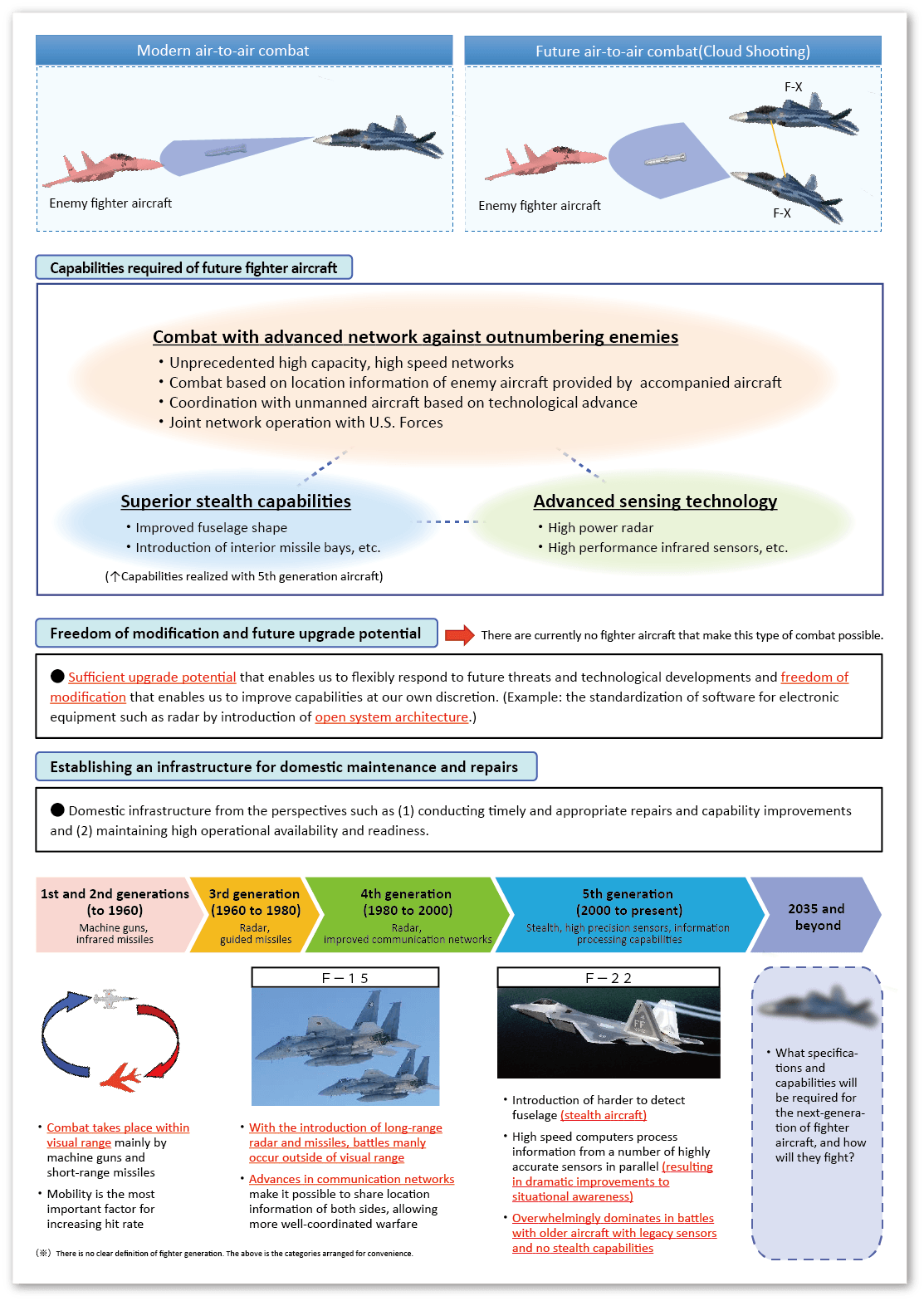SPECIAL FEATURE
Defense Minister Issues Instructions on the Procurement of a New Missile Defense System
In response to the December 18th Cabinet Decision on the “Procurement of a New Missile Defense System, etc., and Strengthening Stand-off Defense Capability,” Minister of Defense Kishi issued orders to unify recognition inside the Ministry of Defense (MOD) / Japan Self-Defense Forces (JSDF) and to bring together the expert knowledge of each related department for the procurement of two Aegis system equipped vessels.
The following is the contents of the Cabinet decision.
Procurement of a New Missile Defense System, etc.
While the Government of Japan has dealt with diverse airborne threats based on “National Defense Program Guidelines for FY2019 and beyond” (NSC Decision and Cabinet Decision on December 18, 2018) and “Medium Term Defense Program (FY2019-FY2023)” (NSC Decision and Cabinet Decision on December 18, 2018, hereinafter referred to as “MTDP”), as part of its policies to be undertaken to respond to increasingly severe security environment surrounding Japan more flexibly and effectively, the Government will procure two Aegis system-equipped vessels in place of the land-based Aegis system. The Japan Maritime Self-Defense Force (JMSDF) will maintain these vessels. The Government will continue to consider the details including additional function and design arrangement of the vessels and will take necessary measures. In addition, the Government will continue its deliberation on the enhancement of deterrence.
Strengthening stand-off defense capability
As the JSDF need to effectively intercept attacks against Japan while ensuring the safety of SDF personnel, the Government will develop upgraded Type-12 surface-to-ship guided missiles with the assumption that they will be operated from various platforms, in addition to the procurement and R&D of stand-off missiles to be advanced under the MTDP, in order to strengthen stand-off defense capability to deal with ships and others attempting to invade Japan including remote islands from the outside of their threat envelopes.
The MOD/JSDF will strive to respond to the increasingly severe security environment surrounding Japan in a flexible and effective manner.
Launch of the F-X development program and the direction of international collaboration
The Japan-led F-X development program to succeed the Japan Air Self-Defense Force (JASDF) F-2 fighter jet has started in Japan’s fiscal year 2020. “Air superiority” which is the basic premise for the JSDF operations, can be regarded as what is called “public goods”, essential for the defense of Japan.
In order to secure this “air superiority” into the future, it is vitally important to develop the next fighter jet with excellent performance, freedom of modification, future upgrade potential, and domestic defense infrastructure for maintenance and repairs, as the successor of the F-2, which is scheduled to start retiring around 2035.
Following the policy that MOD/SDF will “launch a Japan-led development project at an early timing with the possibility of international collaboration in sight” as set forth in the Medium Term Defense Program (FY 2019 - FY 2023), the MOD has made a contract with Mitsubishi Heavy Industries and embarked on the F-X development on October 30th, 2020.
In addition, in December 2020, the MOD has released the direction of international collaboration on the F-X development as follows.
In developing the F-X, the MOD has decided to advance this program with necessary support and cooperation from the U.S., such as selecting the U.S. company Lockheed Martin as the candidate for an integration support company, and starting a new project with the U.S. from next fiscal year to ensure interoperability between Japan and the U.S.
Also, the MOD will continue discussions with the U.S. and the UK to pursue possibility of collaboration on the F-X at system level such as engine and avionics in order to reduce development cost and technical risk.
The development of the F-X is an extraordinarily large program compared to the MOD’s previous aircraft development projects. In order to make this grand program a success, the MOD will develop the F-X by making maximum use of technological and human resources possessed by domestic companies and further strengthening collaboration between the government and companies, and between the companies, as well as considering the direction of international collaboration as mentioned above.





